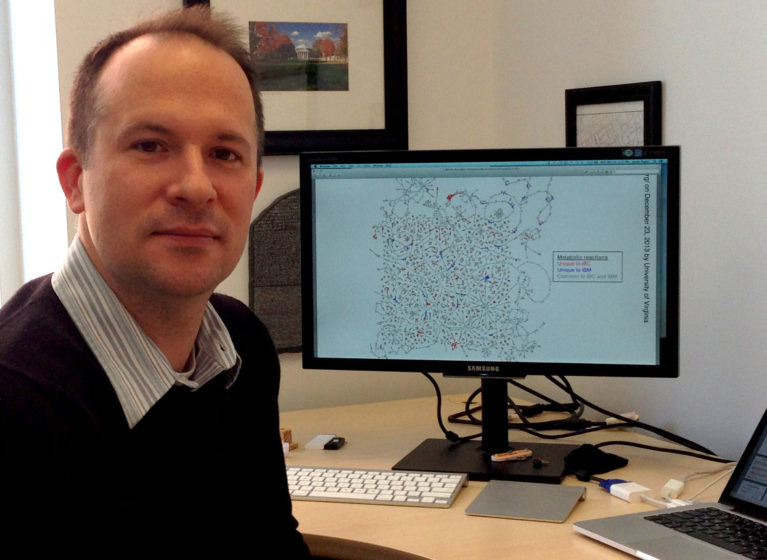
The two species of bacteria are genetically similar – both contagious, both drug resistant, both preying upon people with cystic fibrosis or weakened immune systems – yet they go about their sinister work very differently. There is much to be learned both from how they are alike and how they differ, and so researchers at the University of Virginia School of Medicine have recreated them in electronic form, building an elaborate computer model of each so that scientists can better understand them, better compare them and find new and better ways to stop them.
Drug-resistant infections
The new metabolic model lets scientists examine Burkholderia cenocepacia and Burkholderia multivorans like never before. Both are multi-drug resistant bacteria that pose a threat to patients with cystic fibrosis, setting up in their lungs and contributing to the rapid deterioration of the lungs and overall health. Once colonized, they are very difficult to eradicate and can contribute to other infections and lead to death. “For these two particular bugs, there’s not a lot known and they have only recently been appreciated as important pathogens in the cystic fibrosis lung,” said UVA researcher Jason Papin, PhD, whose lab created the new metabolic simulations. “We want to be able to use the models to predict good drug targets, to try to understand why the pathogen behaves the way it does, to understand how it’s going to evolve under pressure of antibiotics. These bugs have a lot of natural antibiotic-resistance mechanisms – you give some antibiotics and the bug adapts and rewires its network in order to evade that drug, so you want to be able to come up with new targets.”
Bacterial growth and virulence
The new computer model will let scientists examine the bacteria’s growth capability, virulence, reactions to antibiotics and much more. The predictions of how the bacteria will behave then serve as a valuable indicator for what work needs to be done in the lab, suggesting productive lines of research and pointing to new drug targets. “There are a lot of similarities between these bugs, but there are also some notable differences, and it’s not really understood why those differences exist. So we use these models to delineate the functional impact of some of these genetic differences,” said Papin, of the UVA Department of Biomedical Engineering. “Where one enzyme is present in one bug and absent in the other, what are the functional effects of that? Does it make one bug more capable of growing in a particular environment?” Surprisingly, the goal isn’t for the model always to be right. “The model makes some predictions correctly and some predictions incorrectly,” Papin said. “What’s really neat about computer modeling of these biochemical networks and systems is it’s nice when the models are right but it’s really interesting when they’re wrong, because that helps point to aspects of the biology we don’t understand, which helps to generate new hypotheses, new ideas that can be tested.”
Cover story
The new model has been described in an article published online and in print by the American Society of Microbiology’s Journal of Bacteriology , appearing as the cover story of the print edition. The article was authored by the School of Medicine’s Jennifer A. Bartell and Phillip Yen, co-lead authors of the paper and builders of the models; John J. Varga and Joanna B. Goldberg of the Emory University School of Medicine in Atlanta; and Papin.



